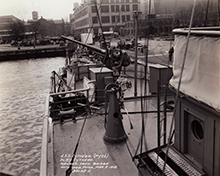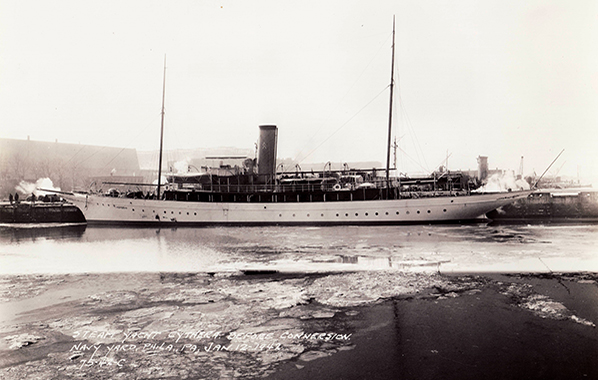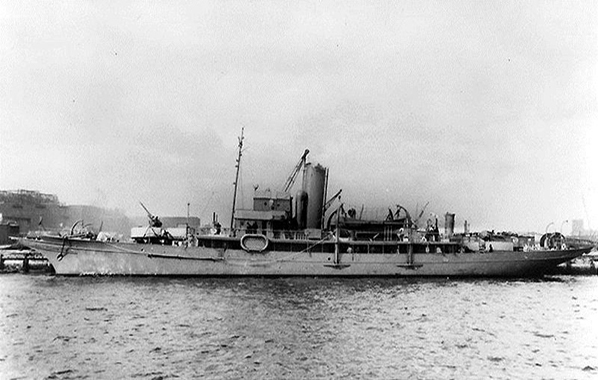ex-USS Cythera
Ship Stats
Depth: Unknown
Vessel Type: Converted steel-hulled yacht
Length: 214.8 feet Breadth: 27.6 feet
Gross Tonnage: 602 Cargo: Military supplies
Built: 1907, Ramage and Ferguson Ltd., Scotland, United Kingdom
Hull Number: 213125 Port of Registry: United States
Owner: United States Navy (donated by the Harkness Family)
Lloyd's Register Details: Steel hull, Steam Screw, Single Screw, Machinery amidships, Oil-fired Steam, Quadruple-expansion four-cylinder steam engine, 2 boilers, Engine 1350 IHP
Former Names: Steam Yacht Agawa (Harkness Family: 1907-1917 and 1919-1941); USS Cythera SP-575 (U.S. Navy: 1917-1919)
Date Lost: May 2, 1942
Sunk By: U-402 Survivors: 2 of 71 survived (69 dead)
Data Collected on Site: NOAA has collected historical data on the ex-USS Cythera, but the shipwreck site has not been located.
Significance: The converted yacht, ex-USS Cythera, held the distinction of serving in both World War I and World War II as an escort and patrol craft. Following its sinking, it is the only instance in American theater where survivors were brought aboard a U-boat and taken to Germany as prisoners of war.
Wreck Site
The remains of the ex-USS Cythera have not been located. The only position information reported detailing where the attack took place comes from the U-boat commander's war diary.
Historical Background

Built in Scotland in 1907, ex-USS Cythera began as the luxury yacht, Agawa, owned by William L. Harkness. When World War I began, Harkness donated the yacht for the war effort, and on October 20, 1917, it was commissioned as USS Cythera (SP-575). The ship predominantly engaged in escorting and towing subchasers in European waters before transferring to the Mediterranean for escort and patrol duty. After the war, the vessel returned to the Harkness family.
On New Year's Eve 1941, just a few weeks after the attack on Pearl Harbor, the Harkness family sold the ship back to the U.S. Navy for one dollar. From January 1942, through the following March, Cythera was once again converted as a patrol craft and re-commissioned as USS Cythera (PY-26). On May 1, 1942, Cythera departed Norfolk, Virginia, en route to Pearl Harbor via the Panama Canal, with orders to join the Pacific Fleet. However, not even 24-hours after leaving Norfolk, Cythera sank.
It was in the early morning hours of May 2, 1942, when U-402 spotted Cythera traveling south along the North Carolina coast. The U-boat fired three torpedoes with two hitting their mark breaking Cythera in half. Cythera sank rapidly with two depth charges detonating as the vessel went down. Only two of the 71-man crew survived. James M. Brown and Charles H. Carter were floating among the wreckage when spotted and picked up by U-402. As U-402 transited across the Atlantic Ocean, it is reported that the German crew treated the two men well. Brown and Carter were taken to Germany and placed in a prisoner-of-war camp.



